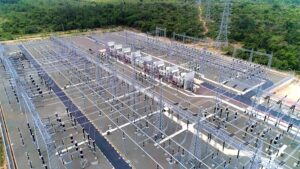The Role of Alternative Financing Mechanisms to Address Sri Lanka’s Debt Overhang

By Imesha Dissanayake
The common path followed by almost all IMF member countries in response to sovereign debt
crises in recent decades, is to enter into an IMF supported stabilisation and structural adjustment
programme. Sri Lanka has been a country that has followed this trend repetitively, having entered
into 16 economic stabilisation programmes during 1965-2020, and recently entered into its 17th
economic stabilisation programme with the IMF.
The United Nations Economic and Social Commission for Asia and the Pacific (UNESCAP) estimates
in 2019 (prior to the pandemic and crisis), showed that Sri Lanka needed to spend an additional 9
per cent of GDP per year to achieve the Sustainable Development Goals (SDGs) by 2030. While the
National Budget for 2023 aims to reduce the budget deficit from 10.2 per cent of GDP in 2022 to 7.9
per cent in 2023, mainly financed through domestic sources. This could limit the resources
available for climate and sustainability-related interventions, and put pressure for higher interest
rates.
The country faces significant climate change risks as well. The global climate risk index for 2021,
ranked Sri Lanka as the 23rd most affected country from extreme weather conditions during the
period of 2000–2019. The country is also expected to see a 1.2 per cent annual GDP loss by 2050
due to effects of climate change.
Therefore, moving into a conventional IMF agreement may not reap the full benefits required for
Sri Lanka. In parallel to the IMF programme and negotiations with other multilateral agencies,
alternative financing mechanisms should be explored in order to achieve Sri Lanka’s development
goals while overcoming the debt overhang. Alternative financing mechanisms, if effectively
implemented, have the potential to provide long-term credit benefits by offering debt relief while
also increasing investments that could strengthen Sri Lanka’s resilience to environmental risks.
This can be a win-win situation for the country to achieve debt sustainability as well promote
economic development in the country.
Alternative Financing Options
The Government of Sri Lanka has currently embarked on capacity development programmes for
the adoption of alternative financing mechanisms such as green bonds. The Securities and Exchange
Commission (SEC) too has developed a policy and regulatory framework governing green bonds
and in April 2023, the SEC approved rules for issuing green bonds for listed companies and
statutory entities. This was subsequent to the publication of the green finance taxonomy by the
Central Bank of Sri Lanka (CBSL), which provided clarity on economic activities that are
environmentally sustainable. Therefore, the landscape for adopting alternative financing
mechanisms is being created, enabling a favorable environment for the use of alternative financing
mechanisms in the future.
An array of solutions can be considered for Sri Lanka, some of which are more appropriate than
others in the country context and government priorities. Debt-for-climate or debt-for-sustainability
swaps have proven to be a successful debt alleviation tool globally while promoting investment in
green and sustainable projects. Carbon credits too can be a feasible and innovative way to address
debt overhang and climate change simultaneously but requires more research on the impacts and
scalability.
Concessional and blended finance models too can provide favourable results while linking these to
development objectives of Sri Lanka. In the long term, thematic bonds are also a tool that can be
used to mobilise domestic and foreign capital. However, prior to a thematic bond issuance, access to
the international finance markets should be established. This is expected to be facilitated by the
completion of the IMF programme:
A) Debt-for-Climate or Debt-for-Sustainability Swaps
This is a financial instrument where the country would swap a promise (repayments on debt) with
another promise (such as funding SDGs). Recently, in the aftermath of Sri Lanka’s default, a global
financial firm too expressed interest in restructuring USD 1 billion of debt for environmental
purposes.
Under a bilateral debt swap a debtor country and a creditor involve the cancellation or reduction of
a portion of the debt in exchange for the debtor’s commitment to invest in sustainability projects.
For example, Sri Lanka could look to negotiate with China (one of its largest bilateral creditors), to
swap some of its debt for investments in protecting its forests, wetlands and coral reefs, which are
rich in biodiversity and provide valuable ecosystem services. This would reduce Sri Lanka’s debt
burden and free up fiscal space for other development priorities, while also enhancing its resilience.
Other Country Experience
In 2021, Belize swapped USD 553 million (total external commercial debt) through a blue bond
arranged by The Nature Conservancy (TNC) to the Belize government to finance a bond-for-cash
exchange at 55 cents per dollar. This was in exchange for a 20-year commitment to expand and
strengthen its marine protected area. The US Development Finance Corporation (DFC) provided
political risk insurance for the blue bond.
In 2022, Barbados swapped USD 150 million of sovereign debt with guarantees from the Inter-
American Development Bank (IDB) and TNC to protect 30 per cent of the waters surrounding the
island following a similar model of Belize.
In 2023, Ecuador swapped USD 1.6 billion of the country’s debt for conservation in the Galápagos
Islands. To date, this is the largest debt-for-nature swap completed in the world. It consisted of an
USD 85 million IDB guarantee and an USD 656 million DFC political-risk insurance.
B) Carbon Credits
Carbon credits are certificates that represent a reduction or avoidance of greenhouse gas emissions.
It allows countries or entities that reduce their emissions below a certain level to sell their surplus
emission reductions (or carbon credits) to countries or entities that need to comply with their
emission targets or voluntarily offset their emissions. This can lower the cost of compliance for
buyers and generate additional income for sellers.
The Paris Agreement has introduced a new mechanism for international cooperation on climate
action, known as Article 6. This mechanism allows countries to cooperate in achieving their
Nationally Determined Contributions (NDCs) through various approaches, such as bilateral or
multilateral agreements, or carbon pricing instruments.
Sri Lanka can also benefit from Article 6 by engaging in arrangements with other countries or
entities that are interested in purchasing its emission reductions. For example, Sri Lanka can enter
into bilateral agreements with countries that have higher emission targets than Sri Lanka, such as
Norway, and sell its emission reductions from sectors that are not covered by NDCs, such as
agriculture or tourism, or from forestry sequestration.
In current carbon markets, the price of one carbon credit can vary from USD 15 to 20 per metric ton
of CO2 emissions (mtCO2e) for afforestation or reforestation projects (Refer the full report for
more details).
However, there is a need for further analysis on the feasibility, viability and sustainability of carbon
credits, as well as for more stakeholder engagement and participation in the design and
implementation of carbon credit projects. If done properly, using carbon credits could be a game-
changer for climate finance and a catalyst for a green recovery from the crisis.
C) Blended Financing
This is a financing mode that combines concessional public finance with non-concessional private
finance and, expertise from both the public and private sectors is gathered for this process. For
example, Sri Lanka could partner with multilateral development banks, or bilateral donors to co-
finance projects that have high development impact but low commercial viability or high risks. The
concessional funds could be used to provide guarantees, subsidies, grants or technical assistance to
reduce the risks or costs for private investors. This would mobilise more resources for Sri Lanka’s
development and catalyse private sector participation.
The Renewable Energy (RE) resource potential in Sri Lanka is substantial and estimated at 133 GW.
This potential can be supported by blended financing mechanisms, which can help diversify the
electricity generation mix in Sri Lanka by adding more RE such as solar and wind to the national
grid. Thereby, minimising the vulnerability to vagaries in rainfall in electricity generation, the
continuous strain on the import bill and global fossil fuel prices. The government is working on
addressing the debt overhang in the RE sector. Fast tracking this, can allow more financing tools to
be leveraged by the sector.
D) Thematic Bonds
Thematic bonds are debt instruments that are issued by a borrower (usually a government or a
corporation) to raise funds for specific projects or activities that have a positive environmental or
social impact. For example, Sri Lanka could issue green bonds to finance projects that support
renewable energy, green transport, waste management, etc. Alternatively, it could issue social
bonds to finance projects that support health care, education, social housing or gender equality.
These bonds could attract investors who are looking for both financial returns and social or
environmental benefits, such as impact investors, ethical funds or socially responsible individuals.
This would diversify Sri Lanka’s investor base and lower its borrowing costs.
Other Country Experience
In 2017, Seychelles issued the world’s first sovereign blue bond, which raised USD 15 million to
support marine sustainability. This was partially guaranteed by the World Bank and the Global
Environment Facility, and offered a lower interest rate than conventional bonds. The proceeds of
the bond were used to repay part of Seychelles’ debt to its Paris Club creditors, who agreed to
cancel 20 per cent of the debt in exchange for the country’s commitment to protect 30 per cent of
its marine areas.
Another example is Nigeria, which issued Africa’s first sovereign green bond in 2017, raising USD
26 million to fund renewable energy and afforestation projects. The green bond was certified by
Climate Bonds Initiative, an international organisation that sets standards for green bonds, and was
oversubscribed by local investors.
These examples show how thematic bonds can be a useful tool for countries to address their debt
overhang while also pursuing their environmental or social goals. However, issuing thematic bonds
also requires a high level of transparency and accountability from the issuers, as they need to
demonstrate that the funds are used for the intended purposes and that they generate measurable
impacts. To ensure this, issuers can follow internationally recognised frameworks and principles
for thematic bonds.
Thematic bonds are not a panacea for solving the debt overhang problem, but they can be a
valuable complement to other debt relief measures, such as debt restructuring, debt swaps, or debt
cancellation. By issuing thematic bonds, countries can not only reduce their debt burden but also
mobilise additional resources for sustainable development and signal their commitment to
addressing global challenges.
Conclusion
By adopting these alternative financing mechanisms, Sri Lanka can not only address the debt
overhang but also achieve its economic development goals while also building resilience to avert
any future crises. However, while adopting alternative financing mechanisms have risen in
popularity, they lead to some limitations and challenges that need to be carefully considered and
managed. The implementation of these mechanisms requires strong institutional and legal
frameworks, governance systems, monitoring and evaluation mechanisms, and technical expertise
to ensure transparency, accountability, effectiveness and efficiency. In Sri Lanka, some of these have
already begun and are ongoing. It should also not create new forms of debt dependency or
conditionality that could undermine its fiscal sustainability or development autonomy.
In conclusion, alternative financing mechanisms can offer tremendous opportunities for Sri Lanka
to overcome its economic and debt crisis while also pursuing its environmental and social
objectives. However, these mechanisms are not silver bullets that can solve all of Sri Lanka’s
problems. They need to be carefully designed, implemented and monitored to ensure that they
deliver the intended benefits.
(The writer is a Senior Research Associate attached to the Economic Intelligence Unit (EIU) of the
Ceylon Chamber of Commerce (CCC).)




